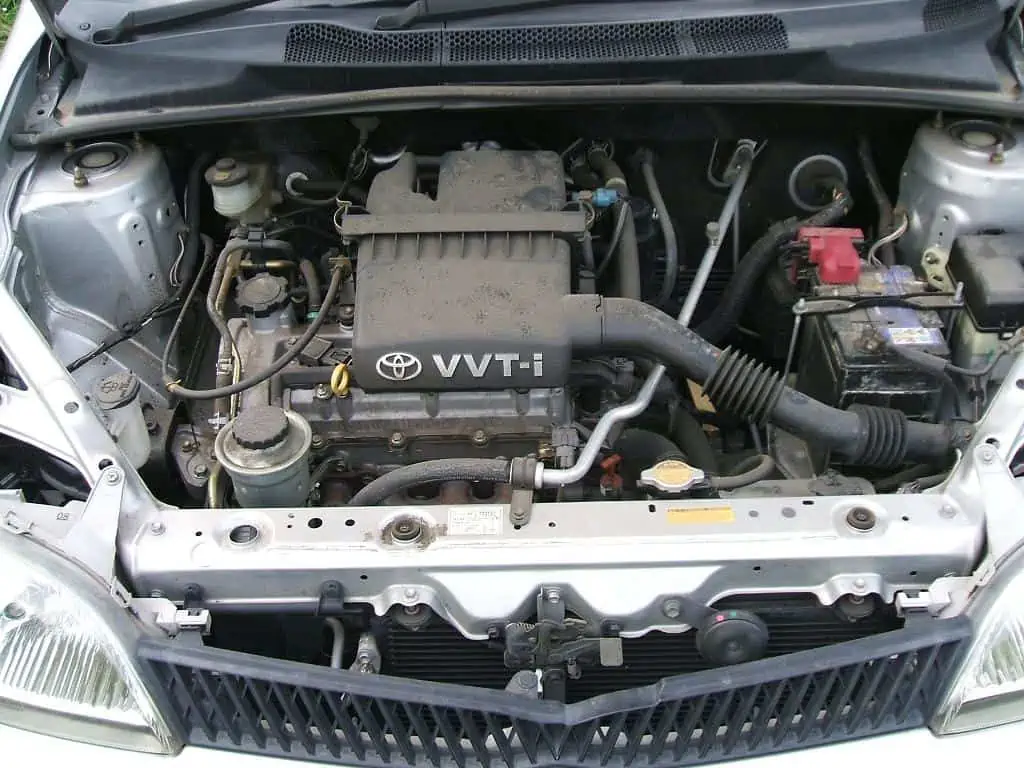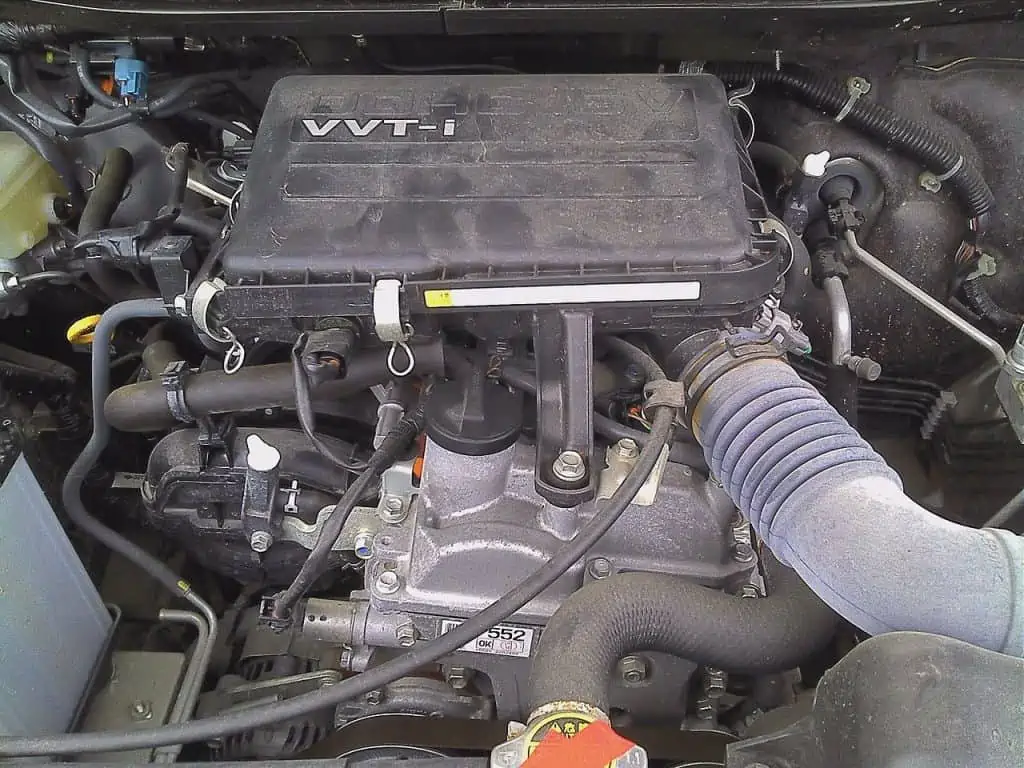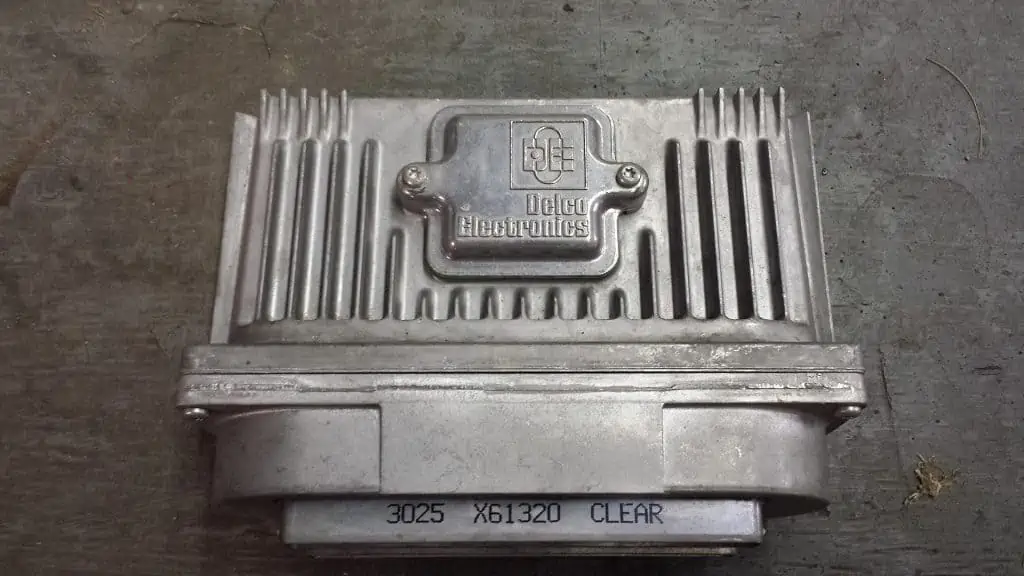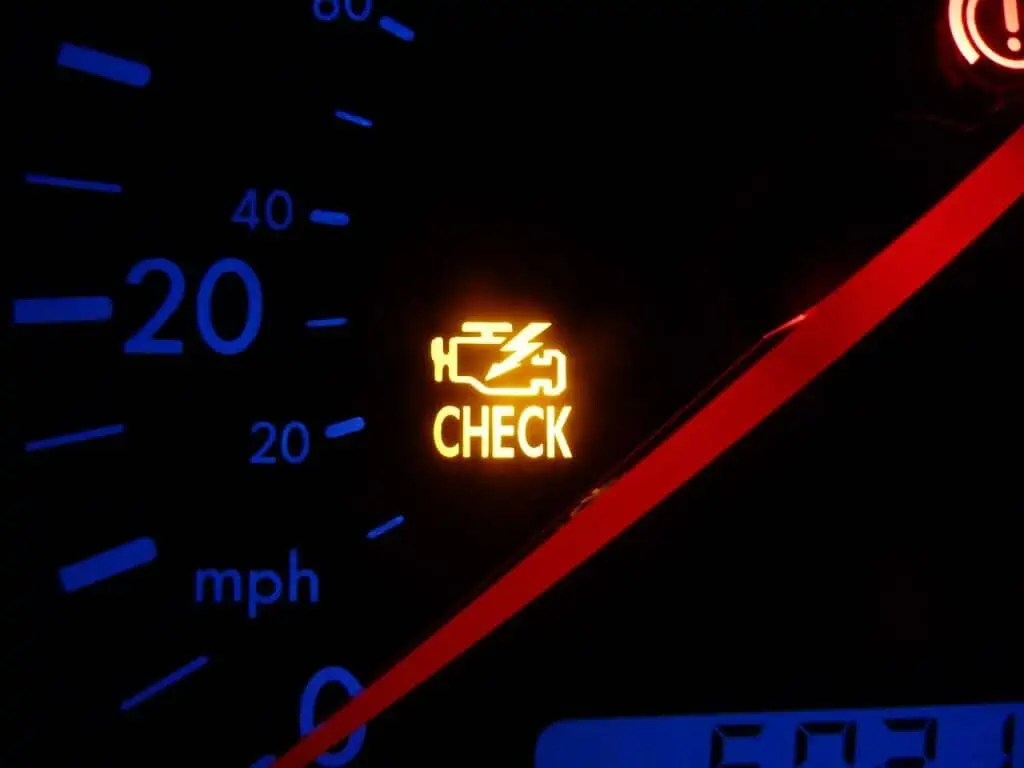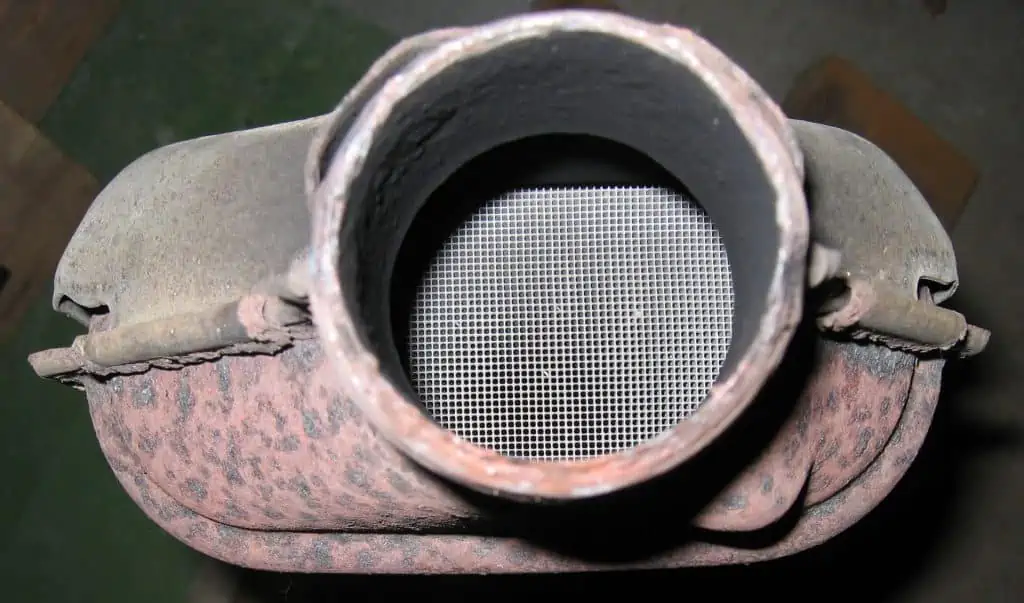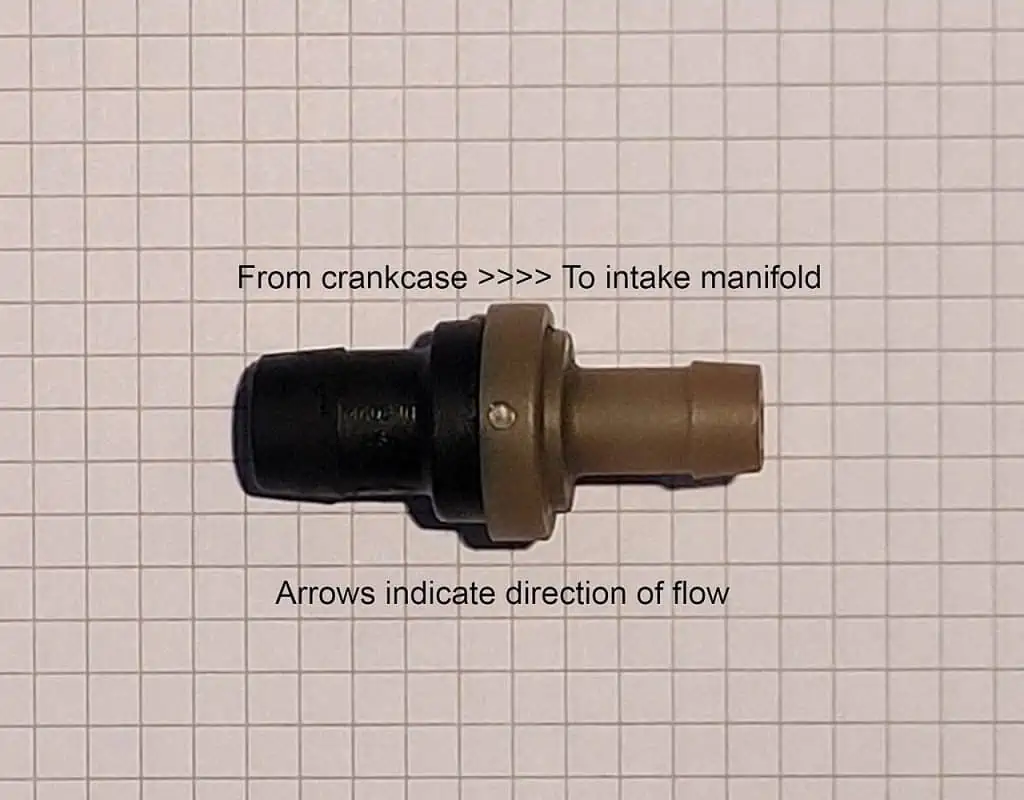Numerous sensors embedded in cars continually monitor the vehicle’s performance and condition. While certain sensors, like knock sensors, check vibration and noise levels to ensure the engine runs at its best, others measure oxygen, air, or temperature.
You should pay attention to vibrations and banging coming from inside your engine if you care about the longevity of the engine. Consequently, you must be able to recognize bad knock sensor symptoms.
The operation of a knock sensor, signs of a bad knock sensor, and how to replace one will all be covered in this article.
What Does an Engine Knock Mean?
Engine knock, sometimes referred to as engine ping or detonation, is the sound and reaction made when a second unintentional launch or explosion takes place in the cylinder in addition to the normal, regulated igniting of the spark plug. In other words, the engine should avoid banging. Several events must take place for this to happen.
A flame surface is produced by the spark plug’s ignition and travels across the remaining cylinder space. The leftover air and fuel mixture is pressurized by this movement of the flame surface.
A rise in temperature brought on by an increase in pressure can be extremely hot and result in a second ignite. When two reactions clash, knocking happens because the second ignition produces a second flame surface.
Why Do Engine Knocks Occur?
The knock might have occurred for several reasons. The primary causes of the same are as follows:
1. A Risk of Higher Intake Temperatures
Have you ever observed that when it’s hot outdoors, your automobile slows down? The heat increases the likelihood of knocking in addition to lowering intake density. The temperature of the combustion gas increases on hot days.
Car engine prone to engine knock by Carolla / CC BY-SA 3.0. Engine knock, also known as engine ping or detonation, is the sound and reaction produced when the spark plug spontaneously ignites in addition to the normal, regulated manner, causing a second unintentional launch or explosion in the cylinder.
Due to this, there is a higher chance of combustion occurring before the cylinder is ready to ignite the fuel-air combination. To prevent this, most engines delay the ignition time when the temperature is high.
2. Utilization of Bad-Quality Fuel
Have you ever filled a gas tank with fuel that has a lower octane rating than the manufacturer recommended? The resistance of gasoline to an explosion caused by compression is measured by its octane number. The resistance to compression ignition increases with octane number.
The engine may knock if improper fuel is used. Please be aware that certain cars can run in more than one octane. The engine will be modified appropriately in such cases.
3. High Levels of Carbon Buildup
On valves, cylinder walls, and pistons, carbon deposits accumulate over time in cars. These carbon buildups may result in hotspots that cause the fuel to burn unevenly.
There are techniques to lessen or get rid of carbon buildup. Examples include executing catch cans, sea foaming, and walnut blasting of valves. The oily air mixture that is released from the positive crankcase ventilation (PCV) system is cleaned by the receiver and air-oil separator (AOS).
4. Failure In ECU Calibration
The ECU may be configured to make the ignition timing very quick or to make the engine run overly lean. Fuel economy is maximized by the low air-fuel ratio.
Advanced timing maximizes performance by burning the air-fuel combination early in the combustion cycle. Both circumstances can, in rare instances, result in engine knocking. For reasons related to emissions, factory-operated ECUs are frequently on the thinner side. Normally, this is OK, but occasionally the maker goes too far.
The manufacturer in this instance provides a Technical Service Bulletin (TSB) to clean the ECU. To enable the engine to calibrate more safely, new engine management software has been developed.
An Explanation of the Knock Sensor
In essence, knock sensors are tiny “listening” devices within or on the engine that pick up on strange noises and vibrations coming from the engine block. They pick up engine block noise and vibration, turn it into an electrical signal, and send it to the engine control unit (ECU). The information is then assessed by the vehicle’s computer to see if the ignition timing needs to be adjusted.
Where are the Knock Sensors Located In a Car?
The knock sensor is occasionally installed below the intake manifold, although it is often mounted immediately outside the engine block.
The Parts and the Functioning of a Knock Sensor
Your knock sensor is tailored for your engine and listens for particular frequencies. The frequency of the engine knock that the sensor is “listening to” is measured in kilohertz (kHz). The frequency of engine knocking and the window of crankshaft rotation at which each cylinder bursts are determined by the engineer.
A car engine by Yones / CC BY-SA 3.0. Your engine-specific knock sensor is tuned to listen for specific frequencies. Kilohertz units represent the frequency of the engine knock that the sensor is “listening to” (kHz).
The sensor ignores “knocks” that do not match the predicted frequency or do not appear inside the anticipated window of any cylinder. The fact that the ECM or PCM can identify the cylinder from which the ping came makes this a credible result as well.
The good news is that each cylinder’s timing may be adjusted separately with a coil-on-plug engine. As a result, if only one engine pings, the ping may be stopped by delaying the ignition timing for that particular cylinder.
Depending on the magnitude of the knock observed, the sensor emits spikes ranging from 0 to 4.5 volts. The ECM or PCM is aware that a knock sensor is active even when the engine is operating normally. The code P0327 is set if the engine is operating but the knock sensor is not sending any indication.
Differences In Knock Sensors Among Various Vehicles
Some early knock sensors are fed 2.5 volts from the engine controller, alter when an engine knock is detected and set the code when the voltage shorts to zero or increases to 5 volts.
Two knock sensors are sometimes installed in the valley below the air intake on V-engines. In these engines, the sensors are housed in “wells” that are protected by rubber grommets. The sensor will be flooded with water and destroyed if the grommet leaks. When using 4.8, 5.3, or 6.0L Chevy V8, this frequently occurs.
You may feel the knock through the coolant on the side of the engine cooling jacket on certain engines because the knock sensor is fastened into the side of the engine block. The bad knock sensor symptoms should not be ignored since they might cause engine damage.
The Ion Sensing Knock Sensor
The ion sensor is a different kind of knock sensor. This is a cutting-edge concept employed in BMW, Ferrari, and other high-end vehicles. This technique pulls current through the spark plug and looks for any current differences that could be signs of an unusual explosion. Although not frequently employed, this technique is nonetheless quite cool.
How Does a Knock Sensor Work?
Piezoelectric ceramics or components are used in the vast majority of knock sensors. Ceramics with piezoelectric properties are clever materials that change mechanical effects—such as pressure, movement, vibration, etc.—into electrical impulses and the other way around.
Piezoelectric ceramics have a variety of uses because of their electromechanical action. Motion sensors, clocks, ultrasonic power converters, stone crushers, ultrasonic welding, active vibration dampers, high-frequency speakers, an actuator for nuclear microscopes, and other devices are examples.
Why Is the Knock Sensor So Important In a Car?
The cylinder won’t knock at all if it’s in good condition. Modern engines, on the other hand, frequently employ ultra-lean mixtures with greater combustion temperatures. Additionally, certain carbon deposits in the cylinder head and piston crown may get sufficiently heated by the heat of combustion to begin the combustion process before the spark plugs ignite.
The many flame planes that arise from this convergence hit the piston’s head as it rises with enough energy to produce a “pin” sound, signaling the beginning of an “explosion.” takes.
This is due in part to the fact that once carbon starts to adhere to the head and piston crowns, these layers take up more room in the combustion chamber, increasing compression and raising the combustion event’s temperature above average.
A car engine control unit by Mgiardina09 / CC BY-SA 3.0. The ECU may be set up to run the engine too lean or with extremely rapid ignition timing. Low air-fuel ratios enhance fuel efficiency.
In recent years, if you have adjusted the distributor to modify the ignition timing, if you set the timing too early, the ignition will happen before the timing happens and the combustion event will “sound,” thus it will “knock.” Except for being summoned, the same thing occurs. to the piston’s head as it ascends.
Due to the gasoline’s burning rate, fuel with an octane rating below that of the vehicle might also result in an explosion. An engine that is designed to run on 93-octane gas will often blow up while running on 87-octane fuel. Using 93-octane fuel in a car set for 87-octane might also result in cold journeys.
Which are the Key Knock Senor Error Codes?
The operation of a knock sensor is connected to several OBD fault codes. Let’s examine the most typical among them.
Diagnostic Trouble Code (DTC) P0325 for the Knock Sensor
An example of a diagnostic trouble code (DTC) is P0325, which stands for knock sensor malfunction (sensor 1, bank 1). This code means that the powertrain control module (PCM), the primary computer in the automobile, is detecting an issue with the sensor or its circuit.
The knock sensor picks up the vibration of a spark knock, irregular combustion. Depending on the make and model, your automobile may feature one or two knock sensors.
Diagnostic Trouble Code (DTC) P0330 for Knock Sensor
Knock Sensor 2 Circuit (Bank 2) is the acronym for the Diagnostic Trouble Code (DTC) P0330. indicates that the knock sensor 2 or its circuit has identified a problem.
When the PCM determines that the input voltage from knock sensor 2 is either too high or too low, the P0330 code is placed in the vehicle’s memory. This error code can cause more severe engine damage and issues if ignored.
After identifying the underlying issue, search forums and other similar websites for a fix that eliminated the P0330 error. Ideally, you ought to abide by the advice provided by other car owners.
Diagnostic Trouble Code (DTC) P0326 for Knock Sensor
Knock Sensor 1 Circuit Range / Performance Bank 1 is the acronym for the Diagnostic Trouble Code (DTC) P0326. When the powertrain control module (PCM) notices that the knock sensor signal is beyond the desired range, the value is set.
Even if the PCM misses the knock sensor signal, it can still be recorded.
Motors of numerous brands and types can be programmed using the code P0326. But this code has no well-known solution. Every car is built differently and may need a different set of fixes.
Before starting any repairs, always double-check with the manufacturer to restore records specifically for your automobile. If you’re still unsure about what to do, you may also decide to transport your car to a repair shop.
A check engine light by Wikiuser100000 / CC BY-SA 3.0. One of the first signs of a malfunctioning knock sensor that makes you wonder about the health of the engine is the check engine light on the dashboard coming on.
What are Some of the Common Bad Knock Sensor Symptoms In Cars?
There are several indications that your knock sensor is broken or not performing properly. The most typical bad knock sensor symptoms are as follows:
1. A Check Engine Light Turns On
The dashboard check engine light turning on is one of the first bad knock sensor symptoms that raise questions about the condition of your engine.
On your dashboard, this light could be present. However, several things might make the check light come on in your dash. A bad knock sensor is one of these causes.
Additional causes for the engine warning light to appear on your dash depend on the problem your car’s engine is having. One of these causes is a malfunctioning O2 sensor, which tracks the quantity of unburned oxygen in the exhaust system, controls the amount of fuel and air that enters the cylinder walls, and transmits data to the vehicle’s computer.
In addition to the poor 02 sensors and a bad knock sensor, a loose gas cap, which aids in preventing fumes from escaping, may also cause this indicator to illuminate.
A blocked catalytic converter in your exhaust system, in addition to these other reasons, can be the source of the warning light by converting carbon monoxide into carbon dioxide.
The engine warning light is typically the first audible and visible indication of a malfunctioning knock sensor in a Honda Accord or any other make or model of vehicle. If neglected, a bad knock sensor can seriously harm your engine.
2. Noises Coming from the Engine Bay When Driving
You’ll notice an audible noise coming from the engine when the knock sensor starts to malfunction. This sounds rather loud. These sounds will get worse the longer you wait to solve the issue.
The ignition of the air-fuel combination in the cylinder is the cause of this noise. In most cases, the combustion point is reached by the air-fuel combination. As a result, when it sounds like this, you should be inspired to take the car to repair right away.
3. Poor Fuel Economy
A bad knock sensor may be to blame if you discover that your gas mileage is lower than usual. Once more, there are a variety of causes for low fuel efficiency.
But there’s even more justification to blame a bad knock sensor if you experience any of these additional bad knock sensor symptoms linked to low fuel efficiency.
4. Difficulty In Acceleration
The control unit will not benefit if the knock sensor is broken, and engine performance will suffer. As a result, the car’s acceleration deteriorates. Less torque and difficulty is accelerating the automobile since only a portion of the engine’s output is produced by the combustion chamber pressure.
5. Engine Backfiring and Rough Idling
This is a clear sign that you will undoubtedly experience. It appears as though the engine will fully shut off or seize. You should not take this matter lightly.
The exhaust catalytic converter by The RedBurn / CC BY-SA 3.0. Bad knock sensors can damage a car’s catalytic converter, increase HC (hydrocarbon) emissions, and further reduce MPG emissions.
6. Damage to the Catalyst
The catalytic converter of a car can be harmed by bad knock sensors, which can also raise HC (hydrocarbon) emissions and further lower MPG emissions.
Unburned hydrocarbons from misfired or broken-down engines are discharged into the environment. It poses a serious threat to our ecosystem, and if it goes on for too long, the catalyst will fail.
7. Implicit Engine Performance
When your internal engine components are broken or degrade over time, this is likely to be one of the most obvious bad knock sensor symptoms that you will notice.
You may soon begin to experience poor acceleration, misfiring, jerking, and drags if you have seen the bad knock sensor symptoms and ignored them. In some circumstances, you can start smelling something burning.
The odor may be so overpowering that both the driver and the passengers would become aware of it. If you keep operating your car in the area, you risk totaling the engine, which would require replacement.
Regardless of the brand, model, or year of the automobile, the engine is one of the most expensive elements you can find in any vehicle. Sometimes the cost of replacing an engine exceeds the value of the car altogether.
A four-cylinder engine would typically cost between $2,000 and $4,000 to replace. If your vehicle has a V-type engine, the cost may exceed $4,000. The exact cost is determined by the brand, model, year, and dealership from whom you wish to purchase the engine.
Is Driving with a Bad Knock Sensor Safe?
Technically, sure, but should you do it? The vehicle will slow down if the knock sensor malfunctions. Because the engine might overheat, the generation of exhaust gases is also exacerbated. Your car’s performance will be impacted overall.
As was already indicated, the knock sensor may have already failed if you notice that the engine is not accelerating as smoothly as it used to. This is demonstrable if traveling at a particular pace causes discomfort, particularly when hauling large goods. The check engine light is typically on when this occurs. It’s impossible to ignore this signal.
In conclusion, if you want to wreck the engine and obtain poor performance out of the automobile, you may drive with a bad knock sensor. As soon as you notice that the period of knock sensors has advanced, it is advisable to swap it out for a high-quality sensor.
How Is Testing of a Bad Knock Sensor Done?
Before rushing out to buy a new knock sensor, it’s a good idea to test the one you think could be defective. However, you’ll want to have the vehicle’s repair information close to hand before beginning. A subscription to a repair database, such as ALLDATA or Mitchel 1 DIY, is preferable to manuals like those from Chilton.
Note: The following basic principles are provided solely for informational and recreational reasons. For detailed repair instructions and suggested safety measures, consult the manufacturer’s manual for your car.
Step 1: Verify If There are Any Diagnostic Trouble Codes (DTCs)
You should start by looking for DTCs that might help you focus your troubleshooting efforts. When there is a problem with the knock sensor or its circuit, onboard diagnostics (OBD) II-equipped vehicles manufactured after 1996 will often set a code. When there is an issue with the knock sensor on some older cars with OBD, I will also save a code.
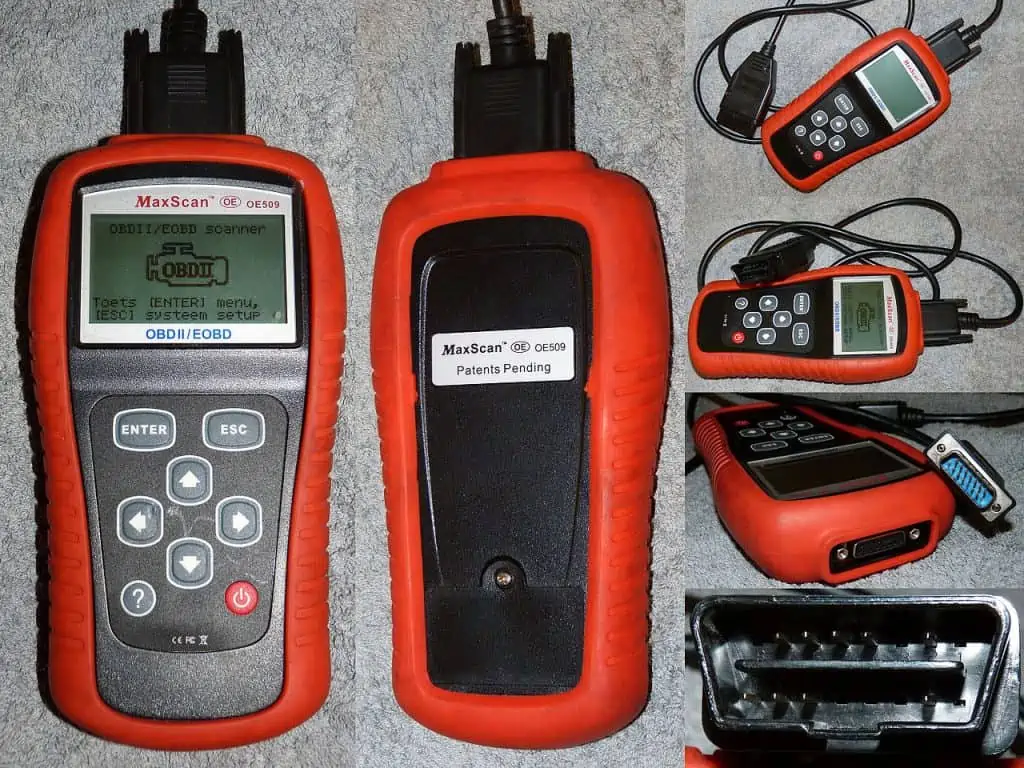
A scan tool or code reader can be used to check for diagnostic issue codes. You can even get a cheap OBD II code reader for your smartphone these days.
DTCs do not provide you with specific information about the nature of the vehicle’s issue, it is vital to note. Codes are only a place to start for more diagnostics.
Step 2: Make a Visual Inspection
You can then proceed to do a visual check. You should search for problems like frayed cables and shoddy connections. Verify that the electrical connector for the knock sensor is tidy and secure.
Clear the DTCs, fix any problems discovered during the visual examination, and then check to see if the issue reappears.
Step 3: Directly Test the Knock Sensor
A knock sensor’s testing might be challenging. Wideband piezoelectric and resonance piezoelectric are the two main types of knock sensors.
Piezoelectric sensors with a wide frequency range can detect vibrations. Resonance piezoelectric sensors, on the other hand, only react to vibrations that are in the same frequency range as spark knock.
Because they are tuned into the same frequency range as spark knock, resonance sensors are also referred to as “tuned” knock sensors (typically, somewhere between 5,000 and 9,000 Hz).
When wideband piezoelectric sensors were more prevalent in the past, tapping on the engine close to the knock sensor was a frequent test technique. You could tell the sensor was functioning to some extent if it responded to the vibrations.
But the more recent resonance-style sensors cannot be tested with them. The majority of experts use an alternative technique to test these sensors, which entails making the engine ping (display spark knock) while keeping an eye on the sensor’s output signal.
Replacement of the Knock Sensor: How Is It Done?
On some vehicles, replacing a bad knock sensor is not too difficult. Before you can access it, you could not need to lose a lot of time in the engine. However, it might be difficult to replace a bad knock sensor on the majority of new automobiles. Before they can be reached, several engine parts must be removed.
Simply take out the old knock sensor and plug in the new one for the majority of automobiles with electronic ignition and Distributor-Less Ignition (DIS).
If the sensor fails, it could be held in place by a retaining clip that can be removed or twisted sideways. The new thread (if there is one) should then be treated with an anti-seizure chemical before being tightened with a wrench or socket.
Step 1
For diagnostic purposes, the knock sensor wire for the majority of distributor ignition automobiles runs from the engine to the rear of the dashboard so the manufacturer can always see how badly the car is misfired.
Before being removed or replaced, this cable needs to be unplugged from the connection beneath the dashboard, and it must be rejoined following installation. Before removing or replacing the sensor, you must first detach the cable from the connector under the dashboard. Each knock sensor is attached to two wires in the majority of autos with distributor ignition.
The voltage of the sensor heating element is carried by one while the signal is carried by the other (if any). These are typically attached to the two wires at one end and one another at the ECU’s other end (Engine Control Unit).
A Positive Crankcase Ventilation (PCV) valve by Flippythedragonslayer / CC BY-SA 4.0. The receiver and air-oil separator clean the oily air mixture that is emitted by the positive crankcase ventilation (PCV) system. This can also lead to knock sensor failure.
Step 2
When installing it and when plugging it back in after that, make sure it is disconnected. If there isn’t a knock sensor harness slot accessible beneath the car’s dashboard, the old oxygen sensor electrical connector in the image above can be utilized to plug in the new sensor during replacement.
The accompanying image only depicts one knock sensor, however, some versions have two of them arranged side by side. No matter how many sensors there are, before removing or changing a sensor, both wires must be severed from the connection beneath the dash.
How Much Does the Knock Sensor Replacement Cost?
A knock’s replacement cost is influenced by several variables. Your car’s make, model, and year, as well as the dealer you wish to take it to. The typical price to replace a knock sensor, however, should be between $130 and $700.
Others automobiles use one knock sensor, some use two sensors, and some use four sensors, therefore the range is fairly broad. Knock sensors typically cost between $40 and $50, but servicing fees might cost between $90 and $300.
The majority of the time, labor expenses and part costs are comparable. A good price on a repair at work from a local independent technician may greatly lower your entire cost.
Why Is the Replaced Knock Sensor Still Receiving Error Codes?
In rare cases, even after replacing a bad knock sensor, fault codes may still appear. This might be a result of the knock sensor’s improper installation or damaged sensor wiring.
When this occurs, you should examine the wiring and other knock sensor parts to make sure everything is connected and working properly.
What Is Likely to Happen If I Do Not Replace the Bad Knock Sensor?
Your engine has a knock sensor to track pre-ignition-related engine noise. This will allow the ignition timing to be advanced by your car’s computer without causing the engine to ping. You will get the best operational engine power and fuel efficiency by doing this. The engine can start to ignite if the knock malfunctions and the auto computer might not notice this.
By blowing holes in the piston or even starting the combustion process on fire, the pinging might result in serious problems. You’ll notice less power, hesitancy, and lost fuel mileage if a knock sensor fails.
The Conclusion
We have covered every aspect of engine knocking and knock sensors in this post. You now have a better understanding of where a knock sensor is located, how it works, and any potential problems that could influence it.
The article then went over the knock sensor’s diagnostic codes and the bad knock sensor symptoms, as they are known. This was followed by information on the replacement procedure and price.
To get to this stage, you had to be aware of the potential bad knock sensor symptoms and the factors that might cause a knock sensor to malfunction. Therefore, to prevent excessive damage to your whole engine, you should seek professional guidance as soon as you observe any of these defects, not just one of these symptoms but two or three at once.
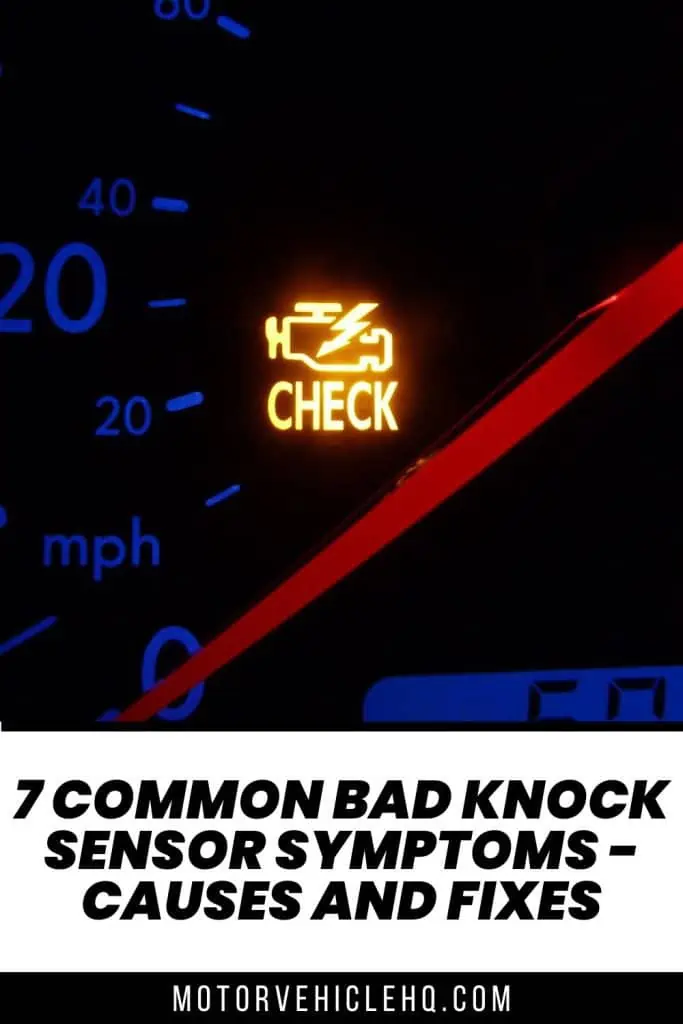
A check engine light by Wikiuser100000 / CC BY-SA 3.0

Jim Wicks is the founder of MotorVehicleHQ. With over two decades of experience in the automotive industry and a degree in Automotive Technology, Jim is a certified car expert who has worked in various roles ranging from a mechanic, car dealership manager, to a racing car driver. He has owned more than 20 cars over the past 15 years. Ask him about any vehicle you see on the road and he can tell you the make, model and year. He loves the aesthetics of all things cars, and keeps his vehicles in pristine condition.
In his free time, Jim enjoys getting his hands dirty under the hood of a classic car or taking long drives along the country roads. His favorite car? A 1967 Shelby GT500, a true classic that, according to Jim, “represents the pure essence of American muscle.”
